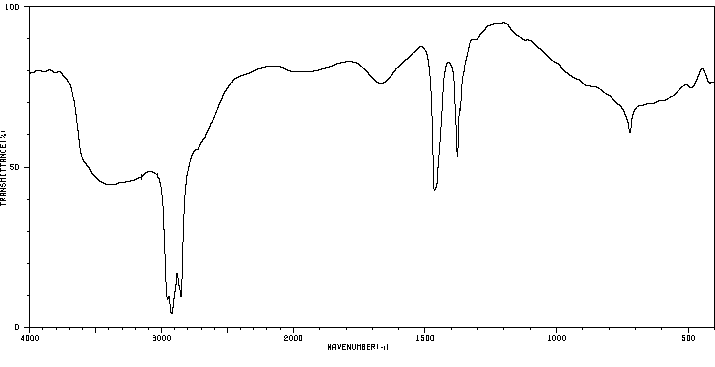申请人:Hoffmann-La Roche Inc.
公开号:US06355653B1
公开(公告)日:2002-03-12
The invention relates to compounds of formula
wherein
R1 is a 5 or 6 membered heteroaryl group, containing 1 to 3 heteroatoms, selected from N, O or S, and which groups are optionally substituted by one or two substituents, which are lower alkyl, —(CH2)nOH, halogen or lower alkoxy, and wherein the heteroaryl groups may be optionally linked to the pyrazole ring via an alkylene or alkenyl group, or is
phenyl, optionally substituted by one or two substituents being lower alkyl, hydroxy-lower alkyl, halogen, hydroxy or lower alkoxy or is
—O(CH2)n,phenyl, benzofuryl, indolyl or benzothiophenyl, or is
—S-lower alkyl;
R2 and R4 are independently from each other hydrogen, cyano or —S(O)2-phenyl;
R3 is hydrogen, halogen or is
a 5 or 6 membered heteroaryl group, containing 1 to 3 heteroatoms, selected from N, O or S, and which groups are optionally substituted by one or two substituents, which are lower alkyl, —(CH2)n-aryl, hydroxy, halogen, lower alkoxy, morpholinyl, amino, lower alkylamino or —C(O)NR′2, and wherein R′ is lower alkyl or hydrogen, or is
phenyl, optionally substituted by one or two substituents being halogen, lower alkyl, lower alkoxy, amino, di-lower alkyl amino, CF3, —OCF3, —NHC(O)lower alkyl, cyano, —C(O)-lower alkyl, —C(O)O-lower alkyl, —S-lower alkyl, —S(O)2NH-phenyl, —S(O)2-methylpiperazinyl; or is
—NR′R″, wherein R′ and R″ are independently from each other hydrogen, —(CH2)nphenyl, which phenyl ring is optionally substituted by halogen or lower alkoxy, —CH(lower alkyl)-phenyl, indan-1-yl, 1,2,3,4-tetrahydro-naphthalen, or cycloalkyl; or is
—O-phenyl, which phenyl ring is optionally substituted by halogen, lower alkyl or lower alkoxy, —O-tetrahydronaphthalenyl or —O—CH2-6-methyl-pyridin-2-yl; or is
-benzo[1,3]dioxolyl, -1H-indol-5-yl, naphthyl, benzofuran-2-yl, 1,3,4,9-tetrahydro-b-carbolin-2-yl, piperidin-1-yl, pyrrolidin-1-yl, piperazin-4-yl-methyl or morpholinyl;
R5 is —NR2, wherein R may be the same or different and is hydrogen, lower alkyl, phenyl, benzyl, —CO-lower alkyl, —CO-lower alkoxy, -lower alkenyl, —CO(CH2)n-phenyl or —COO(CH2)n-phenyl, wherein the phenyl ring is optionally substituted by CF3, lower alkoxy, halogen or lower alkyl, —CO(CH2)3-NHCO-lower alkoxy, —(CH2)n-phenyl, wherein the phenyl ring is optionally substituted by lower alkoxy, CF3 or halogen, or is 4,5-dihydro-1H-imidazol-2-yl-benzoic acid, 1,4,5,6-tetrahydro-pyrimidin-2-yl-benzoic acid or 4,5,6,7-tetrahydro-1H-[1,3]diazepin-2-yl-benzoic acid;
n is 0-4
and their pharmaceutically acceptable salts
该发明涉及以下式的化合物:
其中
R1是一个含有1至3个杂原子(N、O或S)的5或6元杂芳基团,该基团可以选择性地被一个或两个取代基取代,这些取代基可以是较低的烷基、—(
CH2)nOH、卤素或较低的烷氧基,其中这些杂芳基团可以选择性地通过烷基或烯基基团与
吡唑环连接,或者是苯基,可以选择性地被一个或两个取代基取代,这些取代基可以是较低的烷基、羟基较低烷基、卤素、羟基或较低的烷氧基,或者是—O( )n、苯基、
苯并呋喃基、
吲哚基或
苯并噻吩基,或者是—S-较低烷基;
R2和R4彼此独立地是氢、
氰基或—S(O)2-苯基;
R3是氢、卤素或者是一个含有1至3个杂原子(N、O或S)的5或6元杂芳基团,该基团可以选择性地被一个或两个取代基取代,这些取代基可以是较低的烷基、—( )n-芳基、羟基、卤素、较低的烷氧基、吗啉基、
氨基、较低的烷基
氨基或—C(O)NR′2,其中R′是较低的烷基或氢,或者是苯基,可以选择性地被一个或两个取代基取代,这些取代基可以是卤素、较低的烷基、较低的烷氧基、
氨基、二较低烷基
氨基、三
氟甲基、—OCF3、—NHC(O)较低烷基、
氰基、—C(O)-较低烷基、—C(O)O-较低烷基、—S-较低烷基、—S(O)2NH-苯基、—S(O)
2-甲基哌嗪基;或者是—NR′R″,其中R′和R″彼此独立地是氢、—( )n苯基,该苯环可以选择性地被卤素或较低的烷氧基取代,—CH(较低烷基)-苯基、
茚基、
1,2,3,4-四氢萘基,或环烷基;或者是—O-苯基,该苯环可以选择性地被卤素、较低的烷基或较低的烷氧基取代,—O-四氢
萘基或—O— -6-
甲基吡啶-2-基;或者是-苯并[1,3]二噁咯基、-1H-
吲哚-5-基、
萘基、
苯并呋喃-2-基、1,3,4,9-四氢-β-咔啉-2-基、
哌啶-1-基、
吡咯烷-1-基、
哌嗪-4-基-甲基或吗啉基;
R5是—NR2,其中R可以相同也可以不同,是氢、较低的烷基、苯基、苄基、—CO-较低烷基、—CO-较低烷氧基、-较低烯基、—CO( )n-苯基或—COO( )n-苯基,其中苯环可以选择性地被三
氟甲基、较低的烷氧基、卤素或较低的烷基取代,—CO( )3-NHCO-较低烷氧基、—( )n-苯基,其中苯环可以选择性地被较低的烷氧基、三
氟甲基或卤素取代,或者是4,5-二氢-
1H-咪唑-2-基-
苯甲酸、1,4,5,6-四氢-
嘧啶-2-基-
苯甲酸或4,5,6,7-四氢-1H-[1,3]二氮杂环己-2-基-
苯甲酸;
n为0-4
及其药学上可接受的盐







